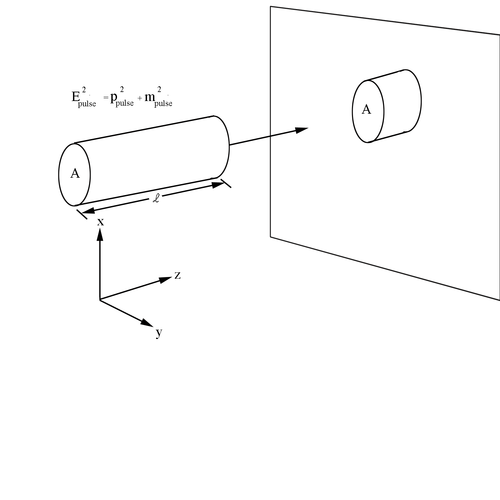Difference between revisions of "Flux of Incoming Particles"
Jump to navigation
Jump to search

Initial flux=
| Line 1: | Line 1: | ||
=Flux of Incoming Particles= | =Flux of Incoming Particles= | ||
<center>[[File:Pulse.png | 500px]]</center> | <center>[[File:Pulse.png | 500px]]</center> | ||
| + | |||
| + | <center><math>I=\frac{dq}{dt}</math></center> | ||
| + | |||
| + | |||
| + | <center><math>dq=nAlq \qquad dt=\frac{l}{v_d}</math></center> | ||
<center><math>E^2 \equiv p^2+m^2</math></center> | <center><math>E^2 \equiv p^2+m^2</math></center> | ||
| + | |||
| + | <center><math>E^2=\S | ||
Using the operator relations | Using the operator relations | ||
<center><math>E=i\hbar \frac{\partial}{\partial t} \qquad \vec p=i\hbar \nabla</math></center> | <center><math>E=i\hbar \frac{\partial}{\partial t} \qquad \vec p=i\hbar \nabla</math></center> | ||
Revision as of 17:16, 6 July 2017
Flux of Incoming Particles

We can obtain the relativitic Schrödinger equation, also known as the Klein-Gordon equation.
The number of particles in a beam passing through a unit area per unit time is
The number of stationary target particles per unit volume is
where is the relative velocity between the particles in the frame where particle 1 is at rest
Using the relativistic definition of energy
Letting be the energy of particle 2 wiith respect to particle 1, the relativistic energy equation can be rewritten such that
where similarly is defined as the momentum of particle 2 with respect to particle 1.
The relative velocity can be expressed as
The invariant form of F is
where in the center of mass frame and
As shown earlier